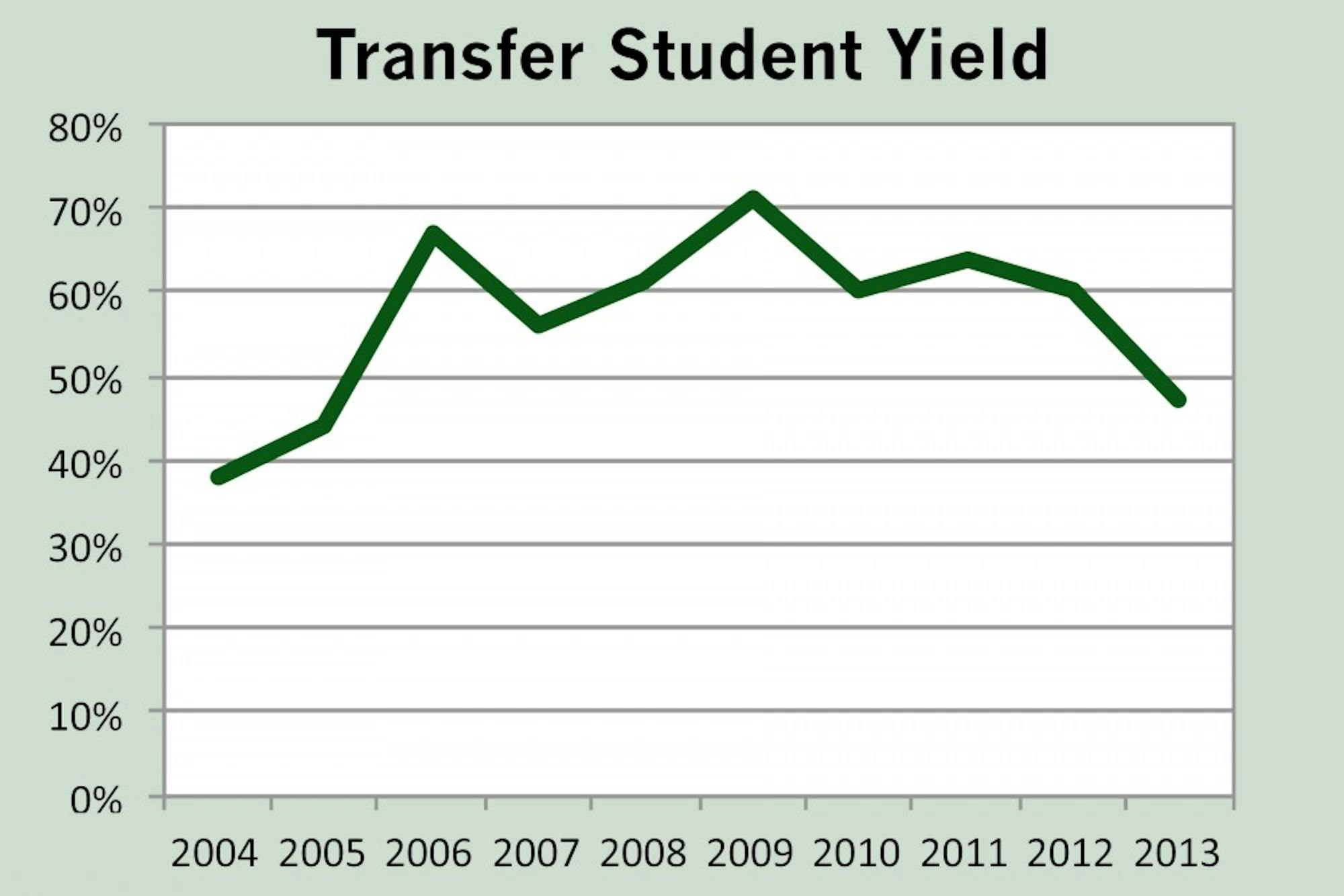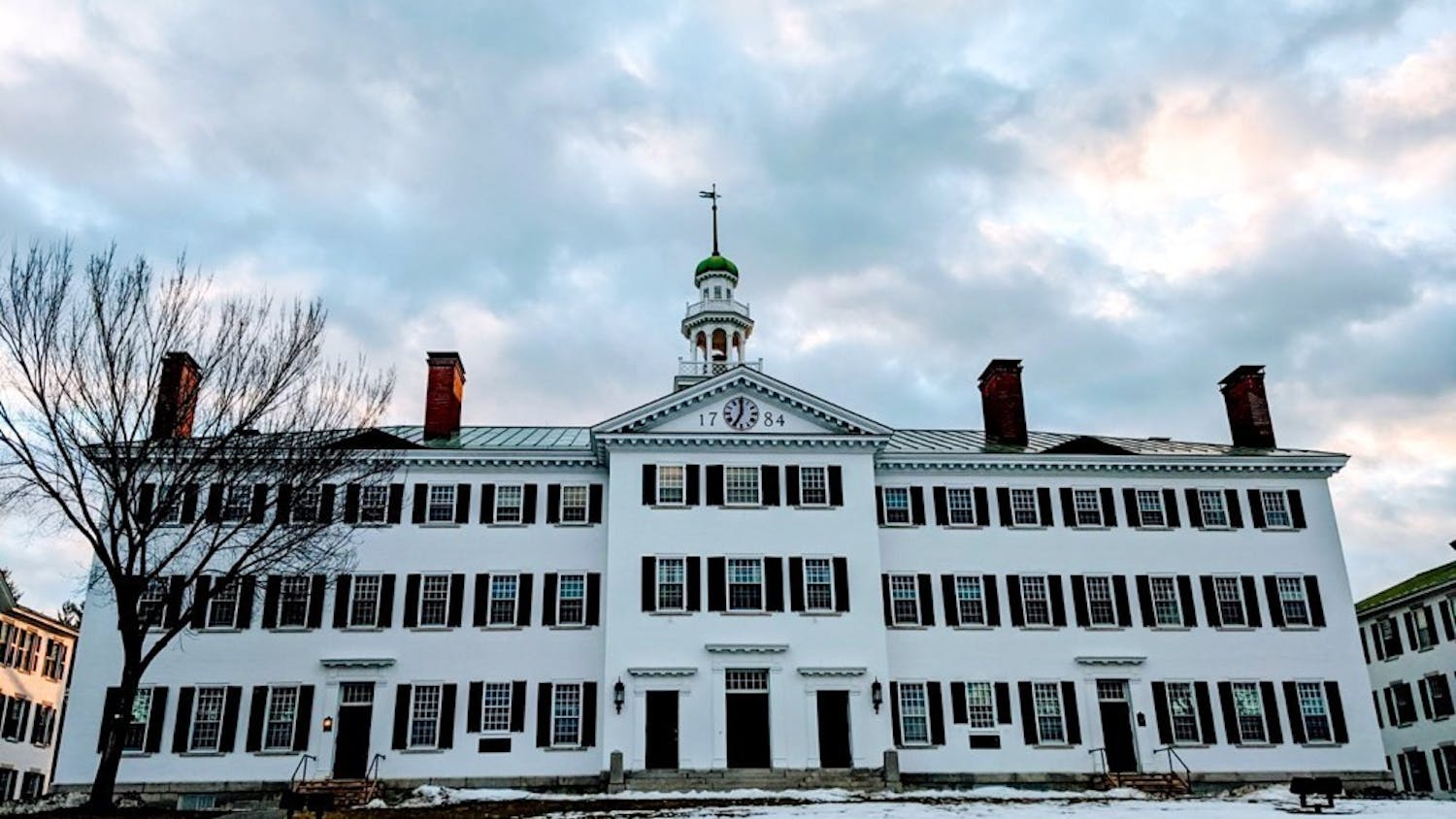After hovering between 60 and 70 percent since 2008, the yield for admitted transfer students dropped to 47 percent in 2013. Despite the smaller rate, the office of undergraduate admissions will not change the process by which it attracts accepted transfer students to the College, Dean of Admissions and Financial Aid Maria Laskaris said.
Laskaris said she was unsure about the reasons for the drop, adding that she did not think it was because of the College’s recent media attention. She noted that fluctuations are natural due to the transfer credit process and the small nature of the transfer program.
This year, due to the high yield percentage of accepted first-year students, the College will accept 15 transfer students, half of the typical figure of 30 students, Laskaris said, resulting in an acceptance rate of under 3 percent. At 1,210 students, the number of incoming freshmen accepting Dartmouth’s offer of acceptance is its highest ever, producing a yield of 54.5 percent.
Laskaris said that although the Class of 2018 is overfilled, it is important to maintain a transfer program. The Class of 2018 currently comprises 90 students above the projected class size of 1,120 students.
“I think there are applicants, there are students who apply as transfers that are very much the kinds of students we want to have in our community,” Laskaris said. “And they would not want to apply as first-year students.”
These applicants include veterans and students with non-traditional educational backgrounds, such as those who have gone to a two-year community college or a junior college before coming to Dartmouth, she said.
The admissions office’s only transfer outreach is to military veterans, Laskaris said, which includes collaboration with organizations that seek to give veterans educational opportunities. The practice of connecting with veterans began with former College President James Wright, who encouraged injured veterans to return to school after completing their military service.
This year, students who are part of the Dartmouth undergraduate veterans group went to Walter Reed Hospital during their alternative spring break trip to Washington, D.C., Laskaris said. There, they spoke about Dartmouth and the College’s academic opportunities, she said.
Laskaris noted, however, that the first-year application pool was the first priority. The number of accepted transfer students is contingent upon the space available after first-year students have decided to matriculate, she said.
Laskaris said the admissions process for transfer students is need-blind and the College meets 100 percent of demonstrated financial need for admitted transfer students, as it does for first-year applicants.
Two-thirds of all students who earn a baccalaureate degree attend two or more colleges or universities, said Judith Brauer, proposal developer at the National Institute for the Study of Transfer Students at the University of North Georgia. A report released through the National Student Clearinghouse Research Center placed the figure at one-third of all students.
Current students who transferred to the College say they chose to attend Dartmouth for various reasons.
John Pessoa ’16 pointed to the quality of academics and his status as a legacy student for reasons he applied to Dartmouth, where he transferred from New York University.
Andrew Spalding ’14, who transferred from the University of Richmond, said he applied to a few other schools as well, including George Washington University and New York University.
“The main difference I can remember is that the Dartmouth application was duea month earlier than the apps at most other schools,” he said.
Because of this, Spalding said he learned of his acceptance to Dartmouth before hearing from the other two schools.
Saaheb Sidana ’16, who transferred from the University of California at Santa Barbara, said he chose to transfer because he was looking for a smaller school with better academic departments. Sidana added that people might be unwilling to transfer because of the smaller number of transfers at Dartmouth compared to other colleges.
In 2013, Brown University enrolled 68 transfer students, while 170 students transferred to the University of Pennsylvania.
Between 15 and 27 transfer students enrolled each year in the College between 2010-13.
“It might be harder to assimilate,” Sidana said.
Hayley Adnopoz ’16, who previously attended Connecticut College, said she appreciated how much simpler the Common Application essay was for transfer applicants than for first-year applicants.
“It basically just asked why I wanted to transfer, so I didn’t have to worry about being super different or creative,” she said.
Adnopoz is a member of The Dartmouth staff.




